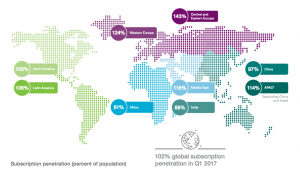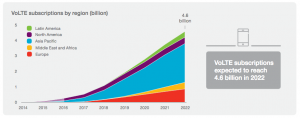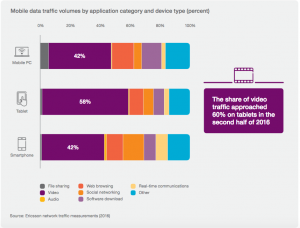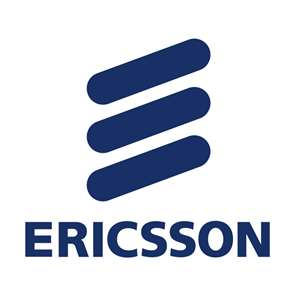The Ericsson Mobility Report June 2017 has revealed that mobile broadband continues to grow strongly. On average, more than one million new mobile broadband subscribers will be added every day up to the end of 2022 and the Report states that the total traffic in mobile networks increased by 70% between the end of Q1 2016 and the end of Q1 2017. Part of this increase is attributed to one Indian operator’s introductory LTE offer that included free data traffic.
The Report also says that the number of mobile subscriptions now exceeds the population in many countries resulting in 102% global subscription penetration in Q1 2017. This figure is mainly because of inactive subscriptions, multiple device ownership or optimisation of subscriptions for different types of calls. As a result, the number of subscribers is lower than the number of subscriptions. Today, there are around 5.2 billion subscribers globally compared to 7.6 billion subscriptions.

VoLTE has now been launched in more than 100 networks in 55 countries. Based on recent measurements in mobile networks, a stronger growth than anticipated has resulted in a significant upward adjustment of Ericsson’s previous forecast. The number of VoLTE subscriptions is now projected to reach 4.6 billion by the end of 2022, making up more than 90% of all LTE subscriptions globally.
However, the network measurements show uneven uptake across regions. In the US, Japan, South Korea and Canada, VoLTE uptake was very strong in 2016, with most networks having more than 60% of voice calls on LTE smartphones provisioned using VoLTE. In some networks this figure was close to 80%.

In Europe, the service is used by fewer people, as many of the launched networks still require subscribers to configure VoLTE themselves in the device settings, or to buy a special VoLTE subscription. Past launches of the service demonstrate that for VoLTE usage to take off, automatic operator provisioning is necessary. In these circumstances, the VoLTE penetration then quickly rises to the percentage of LTE smartphones that are VoLTE-enabled. Due to launches in China and India, more affordable VoLTE devices will be available sooner than expected
Video traffic dominates across devices
Average values from measurements in a selected number of commercial HSPA and LTE networks in the Americas, Asia and Europe in 2016 show that, regardless of device type, video was the largest contributor to traffic volumes. However, there was a large variation between networks.
Compared to similar measurements made in the second half of 2015, the share of video traffic was still increasing on tablets, approaching 60% of total traffic in the second half of 2016. On smartphones, the share of video traffic was slightly lower than 12 months earlier.
YouTube still dominates video traffic in most mobile networks, although it is being challenged by local players in some countries. YouTube traffic accounts for 40–70% of total video traffic for almost all measured networks, regardless of device type. YouTube is also the most used on-demand video service in the world, with 70% of consumers using it at least on a weekly basis.

Netflix is now available in most markets, and in some places its share of video traffic can reach 10–20% of total mobile video traffic. In other markets, Netflix’s share of traffic is still very small.






